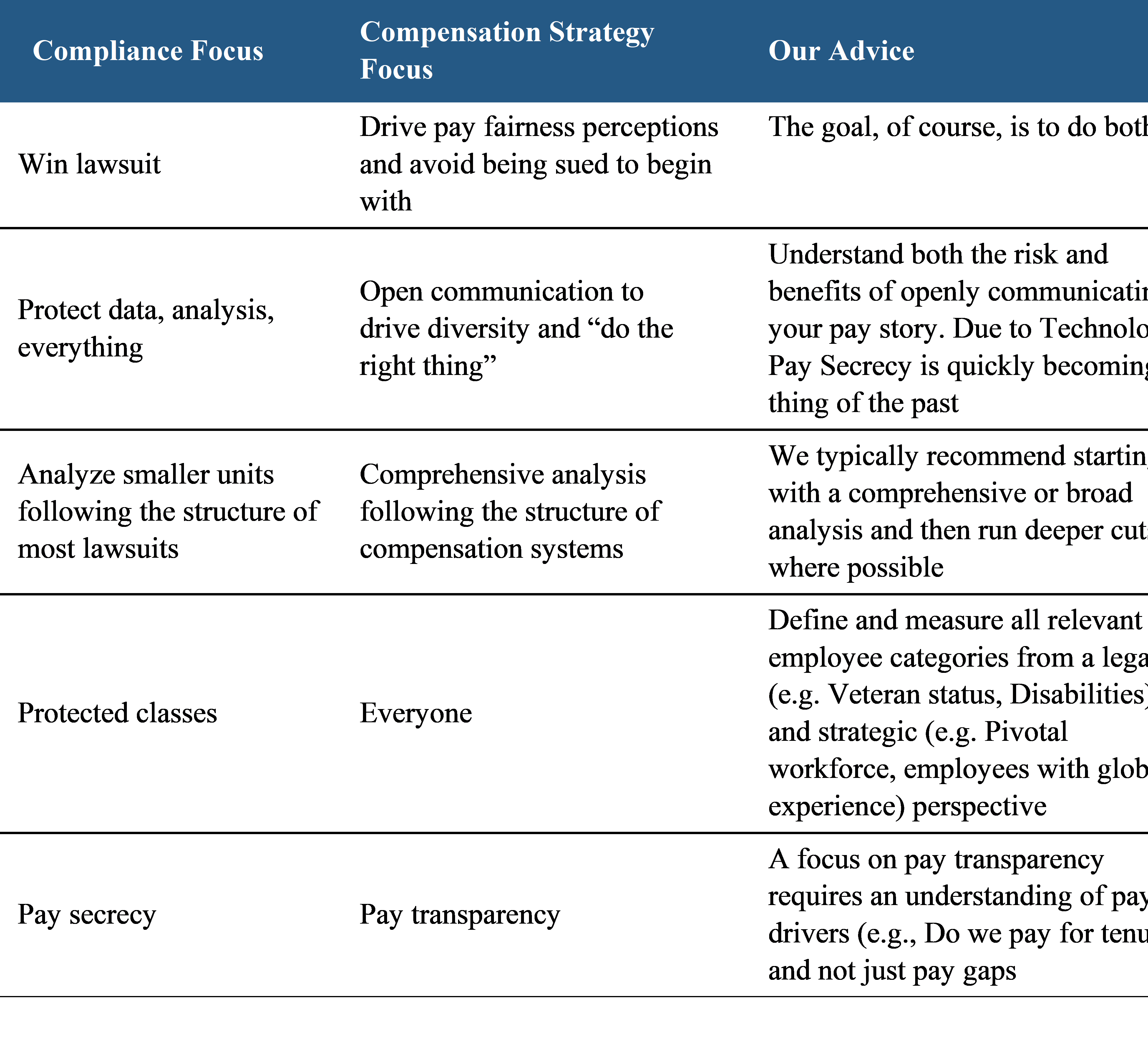Until a few years ago, pay equity analyses were seen mostly as projects driven by lawyers and statisticians to provide protection against lawsuits. In fact, we still work with rewards leaders who previously were left in the dark about the methodology and results of their pay equity analyses. What’s more, legally-driven analytical techniques resemble those applied in actual lawsuits and often cloud the view of what the data is revealing about pay fairness:
- Did we actually achieve pay parity for the whole organization?
- If not, what policy changes would ensure that we achieve and maintain pay parity going forward?
- What is our story from a pay transparency perspective? What kinds of behaviors are we rewarding?
- How can we achieve pay fairness for everyone?
The biggest difference between a pay equity analysis driven by legal vs. compensation strategy considerations is the way in which the analysis is structured. Legally-driven analyses often define very narrow employee groupings and can include as many as hundreds of different multiple regression models. Unfortunately, such a granular view keeps organizations from seeing the big picture and in many cases the analysis approach may even drive a foregone conclusion: Building small analysis pockets makes it almost impossible to detect significant pay differentials by gender, ethnicity or other employee characteristics.
Another difference is how pay equity is approached and discussed. Legally-driven analyses tend to contain and protect everything about the findings. Because these types of projects are mostly concerned with reducing the legal risk exposure, they avoid obtaining — let alone communicating — broader insights that can help improve the compensation system for increased pay fairness. Some of our clients decided to openly communicate their pay equity results to improve their employment brand and attract a more diverse applicant pool. These kinds of outcomes are unlikely when the pay equity analysis is dominated by the legal function.
The table below outlines the different goals of a pay equity project through a compliance vs. compensation strategy lens and our advice for merging the two approaches.

So, the best way to make sure that the legal and strategic perspectives are equally considered in a pay equity project is to work together. Yes, we have seen lawyers, compensation leaders and statisticians within the same organization struggle with each other to find the right balance but we also experienced that it is this struggle that leads to the best results.
Technology has changed the game and employees are more aware than ever about the fair market value of their job and skillset. In this environment, pay secrecy will increasingly become a “thing” of the past.
Organizations are well advised to use pay equity analyses proactively and tell their compensation story — otherwise, others will tell that story for them.
The information contained in this article and the statements expressed herein are of a general nature and not intended to address the circumstances of any particular individual or entity. Although we endeavor to provide accurate and timely information and use sources we consider reliable, there can be no guarantee that such information is accurate as of the date it is received or that it will continue to be accurate in the future. No one should act on such information without the appropriate professional advice after a thorough examination of the particular situation.







